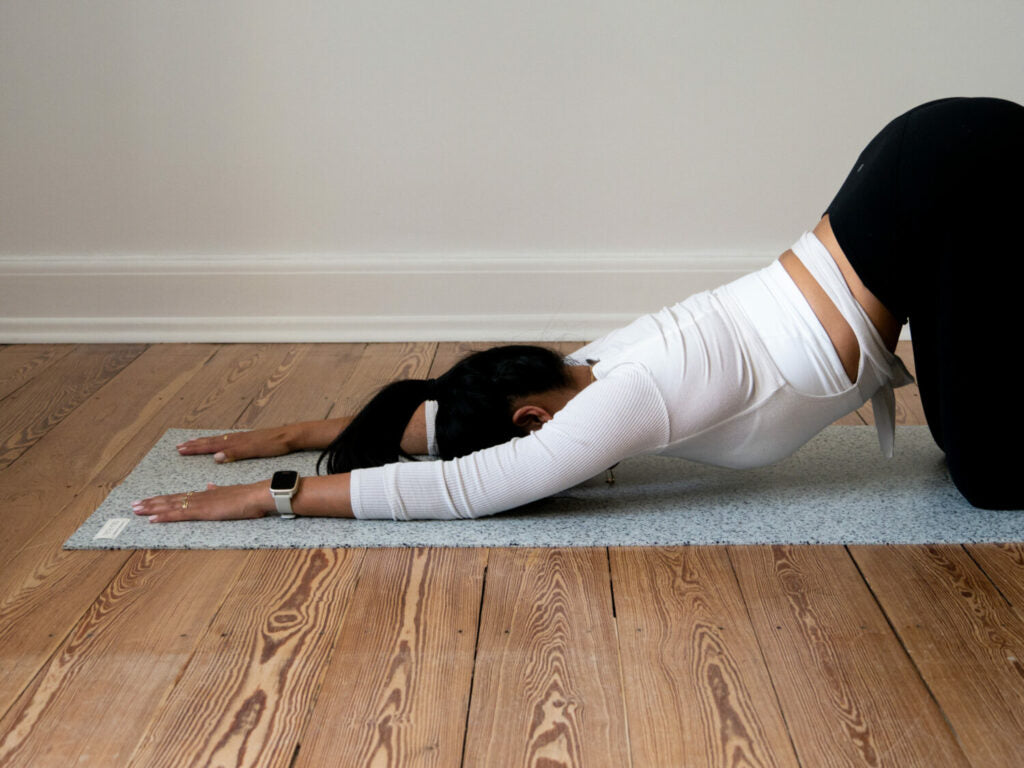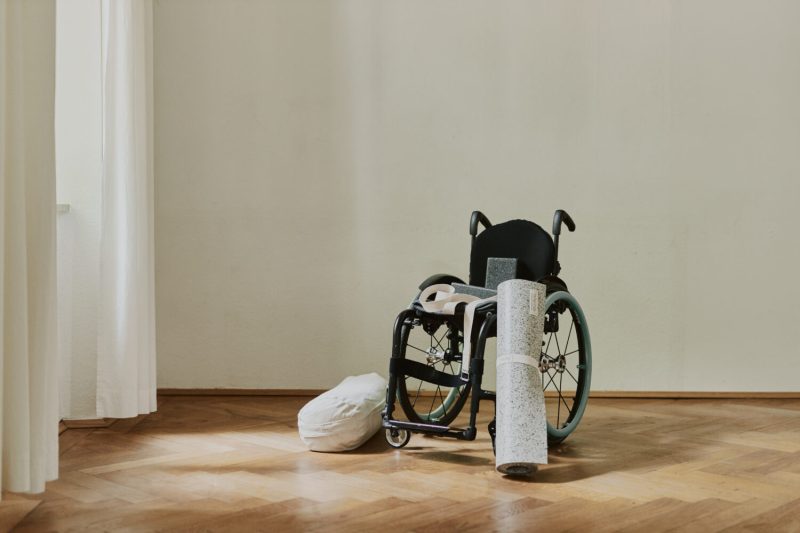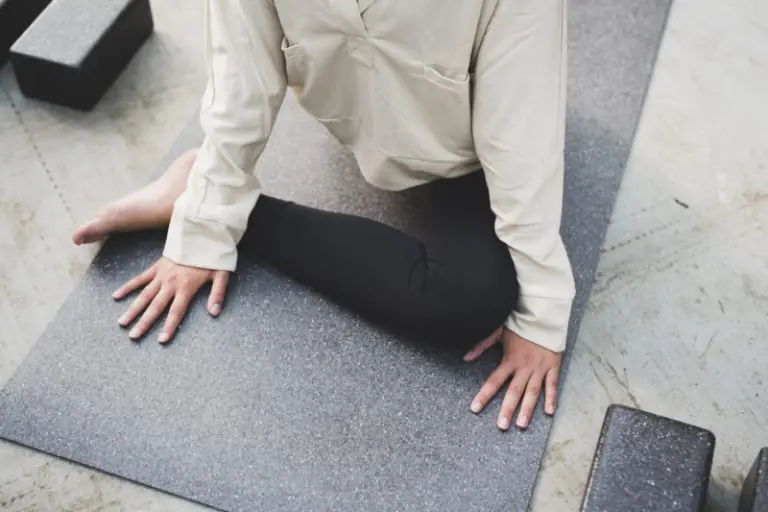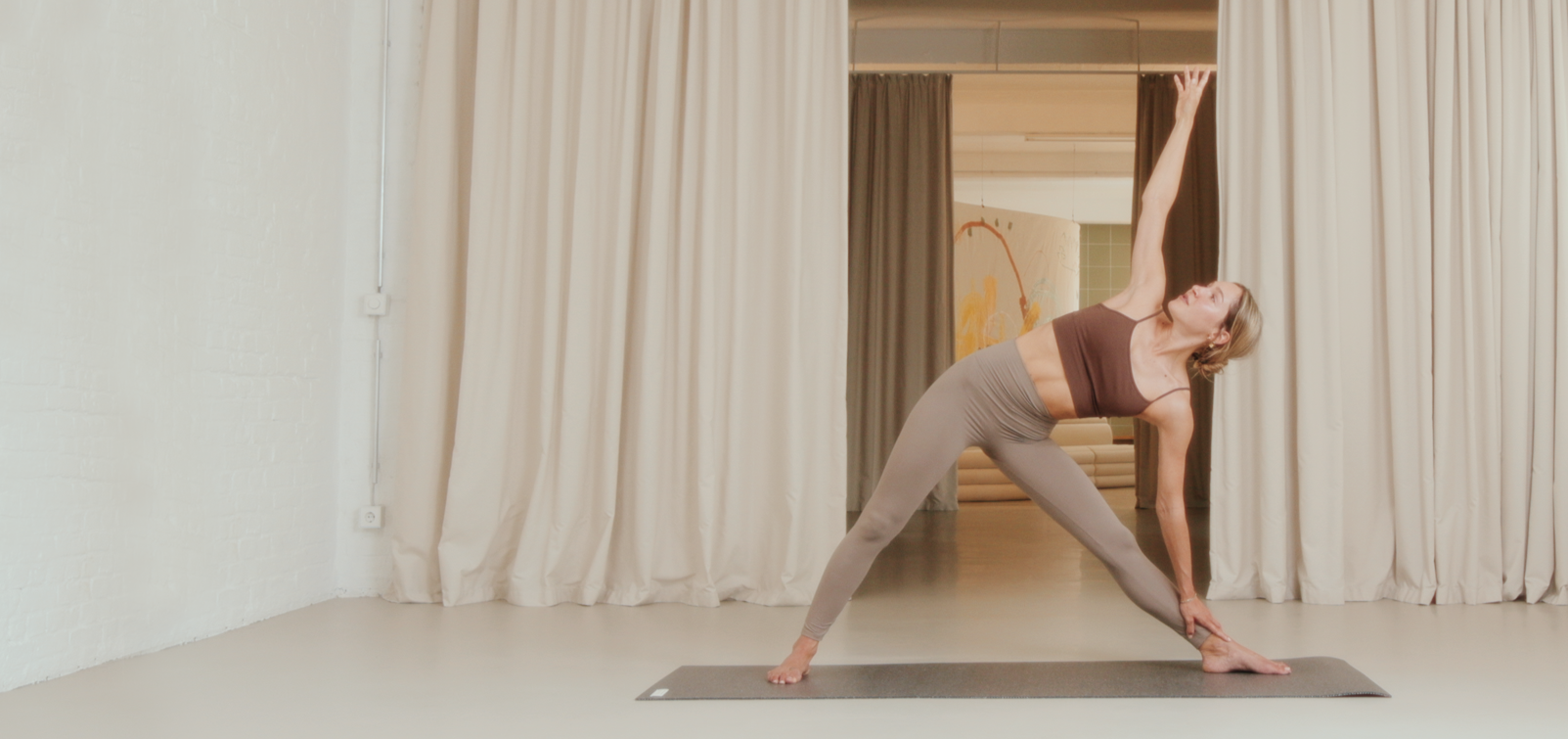Yoga is such a holistic support for your body and well-being. This also includes your digestion. What does yoga have to do with digestion? In this guest post, we asked the wonderful start-up achtmeter if they would like to explain a little more about this. achtmeter writes more about the background of movement, mindfulness and digestion for us here. At the end, they describe some specific yoga asanas that are beneficial for your digestion and how to perform them correctly. We love the connection between yoga and digestion and hope you enjoy reading Thank you to achtmeter for this valuable article!
Sometimes it’s just the delicious pizza from the night before that’s still heavy in our stomachs, other times it’s an immense workload or emotional challenges that cause the gut to struggle. Because not only food but also stressful situations are sometimes not so easy to “digest”.
Yoga is one of the best antidotes for an irritated gastrointestinal system. Just 15 minutes of yoga in the morning can bring more peace to the belly. But why? And which asanas does our digestive system particularly like?
The gut-brain axis
There is a strong connection between our gut and our brain – from both sides. Did you know that the two nerve centres in the head and the intestine develop from the same tissue in the womb? Through our nervous system, messenger substances and hormones, the brain of the head and the brain of the belly constantly communicate with each other, and the countless microorganisms in the intestine, the so-called microbiome, also participate in the lively exchange. This multi-communication channel is called the gut-brain axis.
Our brain shapes our intestinal functions, but also vice versa, the intestinal processes have an influence on our brain and our psyche. Due to the constant exchange of information, emotions, both of a positive nature and mental stress, have an effect on our entire body system.
Our body as a mirror of the mind – and vice versa
Maybe you know that sinking feeling in your stomach when you’re newly in love that feels like butterflies are fluttering around wildly, or you’ve had to deal with anxiety diarrhoea from all the excitement before a big exam? Our intestines are sensitive creatures of habit. If we are not feeling well psychologically, if we feel anxious or are permanently under stress, this can make itself felt physically and our intestines rebel with flatulence, constipation, diarrhoea or nausea.
But physical discomfort can also take a toll on our psyche. Logical really, because anyone who suffers from pain, for example, experiences an energy-sapping constant strain. Bloating, constipation, diarrhoea or even abdominal pain and nausea can limit life quite a bit and result in feelings of insecurity or self-doubt. Maybe you have to follow a certain diet or it’s a big mystery to you when and how your gut reacts to certain life circumstances. An invitation to dinner at a friend’s house is then suddenly accompanied by nervousness and tension.

Moving from thinking to feeling
Due to the many and loud voices outside, we easily forget to listen to our own inner voice and to pay attention to our own needs. Interoception, that is, consciously getting to know and focusing on our inner signals, can provide valuable relaxation in such moments and bring you back into contact with yourself and your needs.
By stopping and giving yourself time to notice and reflect on physical and mental signals, you consciously create space for more self-love and self-care. This relaxation and distance from the outside helps you to reconnect with yourself in a gentle way and can also relieve symptoms such as stomach aches or diarrhoea.
Lovingly caring for the intestine
In addition to emotional affection, during your yoga practice you also lovingly attend to your intestines on a physiological level. All systems of the body, from the lymphatic system to the digestive system and the cardiovascular system to the muscles and organs, benefit from the teachings of yoga. Yoga exercises (asanas) get your digestive system moving and through steady, deep abdominal breathing you also massage your intestines and make their difficult digestive work easier. Meditation and pranayama (breathing exercises) stimulate the vagus nerve – the so-called relaxation nerve. When it is active, your digestive system receives more attention: the blood vessels in the abdomen dilate, the intestines are supplied with oxygen and can do their job much better.
Learn to recognise your needs
Here is a small selection of exercises to help you relieve acute bloating, stimulate your digestion, recharge your batteries, massage your abdominal organs and simply calm your entire nervous system. Take these asanas and mindfulness techniques more as a guide that you can follow, but that doesn’t dictate anything. It is your opportunity to feel into your body, get out of your head and celebrate your individuality. You are unique and know best what is good for you!
Yoga exercises to relieve flatulence
Your belly is taut, the top button of your trousers has been undone for a long time and you feel as if you are very pregnant. Flatulence is just super uncomfortable! The following asanas help us to release tension and simply fart out too much air.
Cat and cow – Marjaryasana-Bidalasana
The dynamic sequence of cat and cow stimulates digestion in a natural way. The alternating stretching and gentle contraction of your abdomen, i.e. the conscious contraction and relaxation, brings movement into your intestinal area.
- Take time to calmly align your foundation. Place your hands shoulder-width apart on the mat and bring your knees back so that your buttocks are directly above them.
- Inhaling let the abdominal wall sink loosely, lift the sternum, head and chin and direct your gaze upwards as far as is comfortable for you. Tilt your tailbone slightly upwards into a natural hollow back.
- Exhaling arch your back and round your back, gently tilt your chin towards your chest and pull your belly button powerfully towards your spine.
- Follow your natural breathing rhythm and repeat the exercise 5-10 times.

Wind Release Pose – Pavanamuktasana
I like to affectionately call it fart asana. Because it has just this significant effect through gentle pressure on the abdominal organs.
- Lie comfortably on your back and pull both knees towards your chest.
- Hug your thighs and raise your head slightly until your forehead touches your knees.
- Breathe in evenly and hold the tension for a few seconds and release.

Melting Heart – Anahatasana
The intense chest and heart opening provides a back stretch and helps you release unnecessary air in the gut and release tension in the abdomen.
- Come into quadrupedal position and place your hands shoulder-width directly under your shoulders, your hips above your knees.
- Slowly walk forward with your hands as far as you can. Make sure that your hips continue to rest above your knees.
- Let go of the abdominal wall and breathe in and out in a relaxed way.

First aid for constipation: Yoga and stimulate digestion
Learn to let go! Too little fibre, low fluid intake or intolerances are not the only reasons for constipation. As you now know, stress or worry can also quickly upset a sensitive digestive system. If we are very preoccupied with something, our body shifts more energy to our brain to keep the mental merry-go-round going – digestion comes to a standstill and it is just as difficult for us to let go of our thoughts as well as our bowel movements.
Half Twist Pose – Ardha Matsyendrasana
The rotating seat has a detoxifying effect. Because the intense twisting exercise promotes conscious contraction and relaxation and wrings out your abdominal organs like a sponge, fresh blood flows into the organs and thus gets your digestive system moving. Be sure to practice the exercise in the direction of the digestive flow (as described here).
- Sit upright with both legs stretched out in front.
- Bend the right knee and place the foot on the outside of the left knee.
- Now also bend the left foot and place it on the right side of the buttocks. Make sure that both your ischial bones are grounded. If this is uncomfortable, it is better to keep the left leg extended – the effect of the exercise is the same.
- Now stretch both arms upwards, turn the upper body slightly to the right and place the left arm on the outside of the right knee.
- Look gently over your right shoulder. Inhaling lengthen the spine and exhaling use the leverage of the knee and arm to twist further up to the right.
- Dissolve the Asana and repeat on the left side.

Forward Bend – Paschimottanasana
The forward bend stimulates blood circulation in the abdomen and thus also digestion. This stretching of the spine is also really good when you come back from a long session on the toilet and want to do something good for your back. It is not important whether you can reach your toes, but how much you stretch your spine.
- Sit upright and stretch your legs long in front of you.
- Flex the feet, pull the toes towards you and gently push the balls of the feet away from you.
- Bring the hands to the right and left of your hips and actively push the palms into the mat.
- Then let your sternum pull you forward so that your back remains straight.
- Then place your hands where it feels comfortable for you.

Boat – Navasana
Strengthening exercises like the boat can also help you balance your digestion in the long run. Especially with a sluggish digestive system, strengthening the abdominal muscles can boost bowel function.
- Sit up straight and pull your knees close to you.
- Hug your knees and straighten your torso, making your back very long. Then with both arms grasp your thighs below the squats and slowly begin to lift your feet off the mat.
- Release both arms and extend them forward to the side of your body. Stop here and breathe.
- You can keep the legs bent or slowly extend them for even more strengthening. Make sure that your back remains long.

Recharge your batteries and relax
The Sanskrit word yoga translates as unity, the balance of yin and yang or sun and moon. Even if Instagram suggests that impressive asanas such as Handstand (Adho Mukha Vrksasana) or Peacock (Pincha Mayurasana) are particularly desirable, it is important to create balance in the asana practice and to integrate calming exercises alongside dynamic and active asanas. Allow yourself this time of rest and allow yourself to draw strength to promote healthy sleep and face intestinal ailments and challenges with renewed energy.
Lying Butterfly – Supta Baddha Konasana
The lying exercise has a calming effect and gives you the opportunity to make contact with your belly with every breath. With the help of your breath you can gently massage your abdominal organs.
- Lie on your back, place your feet in front of your buttocks, let your knees sink outwards and place the soles of your feet together.
- Push the feet slightly away from your buttocks to create a diamond shape.
- If your knees are very high in the air, place two bolsters, blocks or cushions underneath for comfort. It is important that your muscles are not too tense and that you can really let go.
- Put one hand on your heart and the other on your belly.
- Consciously let the abdominal wall relax. Inhale, arch your belly outwards and exhale pulling your navel towards your spine.

Supported Shoulder Stand – Viparita Karani
Sometimes it’s just good to change perspective. Through this inverted posture, more blood flows into your abdominal organs and your digestion is supported. Use a yoga bolster or yoga block to help you.
- Come into your supine position and place your feet hip-width apart in front of you.
- Raise your leg and buttocks so that you can place the cushion or yoga bolster at the lowest level under your sacrum. If you don’t know exactly where your sacrum is, feel down your spine, just before your buttocks you will feel a square bony area, THAT is your sacrum.
- Put your buttocks down in a relaxed position. Make sure you don’t feel any pain here. If the block is too hard, put another blanket underneath.
- Stretch both legs towards the ceiling. Try to align your feet and knees with your pelvis to distribute the weight as evenly as possible.
- Place your arms relaxed at the side of your body and let your palms face upwards. Relax your shoulders, let them sink to the mat.
- If you like, close your eyes and stay here for at least 20 deep and calm breaths.

End Relaxation – Savasana
- Lie on your back, open your feet mat-width apart.
- Also rest your arm relaxed at the side of your body so that there is a little space between your upper body and your arms and air can circulate.
- Inhale, once again tense your whole body, lift your limbs off the floor and contract your facial muscles. Hold for a moment and exhaling release all the muscles.
- Close your eyes, relax your jaw and also let your breathing flow naturally.

We thank you very much for this valuable article!
This article is a guest post by achtmeter – your learning platform for digestive health
In cooperation with Milena Magerl





